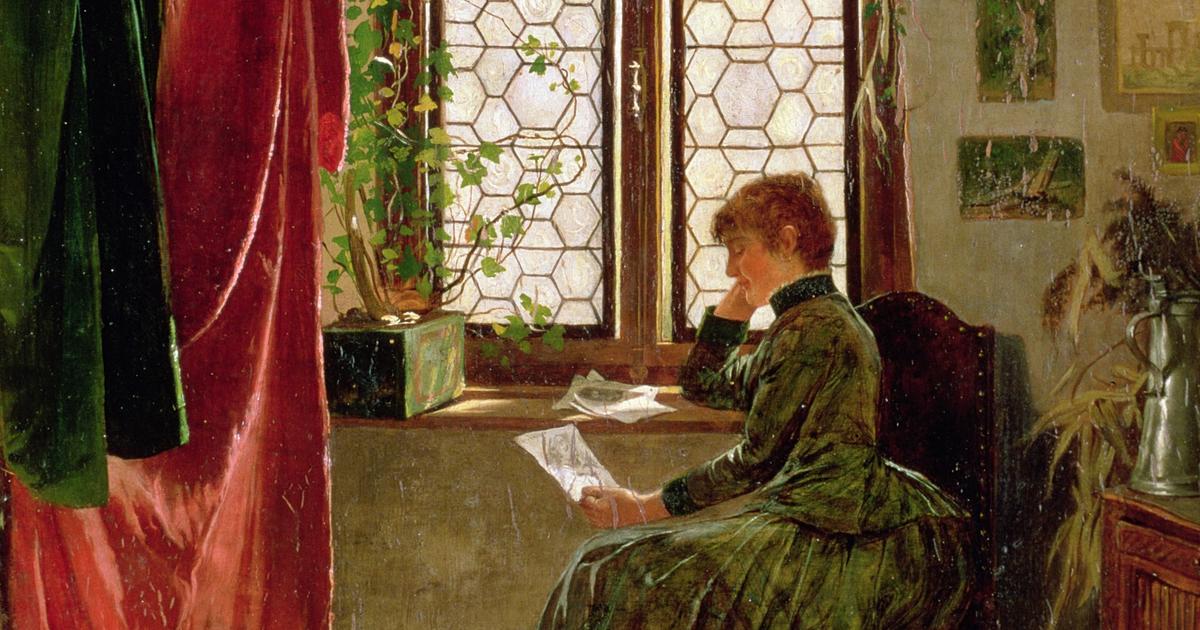A tender gesture, a few verses slipped into the ear, a solemn poem or an inflamed epistole.
There is no right or wrong way to declare your love.
Every loved one is unique in the eyes of the one who desires it.
Also, he deserves that we let him know the love we have for him as he prefers it.
For some, the written word is the most likely to touch the heart.
To discover
Crosswords, arrow words, 7 Letters... Free to play anywhere, anytime with the Le Figaro Games app
So the suitor takes his courage in both hands and begins to write a sonnet or a poem in free verse.
But the pen stops.
Even when the intention is strong, the style exercise proves to be elusive.
How the hell do you best express your feelings?
Many of our great authors have considered the question.
Through their works, their correspondence, it is possible to observe the most beautiful formulas of the French language.
And to draw inspiration from it to define the fairest way to let your heart speak.
Hugo and the analogy
Of the intimate Victor, we know more the inconsolable father of the death of his daughter in 1843 and the debonair grandfather of 1877, than the passionate lover of a lifetime.
From 1833, the existence of the author of the
Last Day of a Convict
(1829) is linked to that of the actress Juliette Drouet, whom he meets when she plays the role of the young Juliette in his play,
Lucrezia Borgia
(1833).
A long liaison of nearly half a century and rich in more than 23,000 love letters then begins.
On February 17, 1834, in a missive, he sent her these few words making the analogy between the verb "to love" and the actress:
“To believe, to hope, to enjoy, to live, to dream, to smile, to breathe, to feel, to sigh, to want, to be able, all these words are contained in a single word: to love.
Likewise, my Juliet, all the rays of the sky, those which come from the sun, those which come from the stars, those of the night as well as those of the day, are mingled in a look from you!
Read alsoTen beautiful formulas to read and reread from French writers
Sand's coded message
From 1833 to 1835, George Sand lived a devouring passion with the terrible child of romanticism, Alfred de Musset.
From this tumultuous adventure remains one of the most famous correspondences in French literature, as poetic as it is erotic.
Witness these verses written in 1835 which, by skipping every other line, compose a message quite different from the one we imagine reading:
“
I am very moved to tell you that I have
well understood the other night that you had
always a mad desire to make me
to dance. I remember your
fuck and i wish it was
there is a proof that I can be loved
by you. I'm ready to show you my
disinterested affection without cal-
ass, and if you want to see me too
to reveal to you without artifice my soul
completely naked, come pay me a visit
…”
Baudelaire's invitation to travel
In 1857, The Flowers of Evil
appeared
.
In the first part of the collection, entitled "Spleen and Ideal", the poet dedicates a lyrical text to Marie Daubrun, a famous actress with whom he maintains a relationship.
Through
L'invitation au voyage
, Charles Baudelaire invites the one he loves to follow him towards a dreamlike and exotic elsewhere, towards musicality, the beauty of the words he uses.
As beautiful as the feeling they convey:
“Glossy furniture,
Polished by the years,
Would decorate our room;
The rarest flowers
Mixing their smells
To the vague scents of amber,
The rich ceilings,
deep mirrors,
Oriental splendour,
Everything would speak there
To the soul in secret
His sweet native language."
Read alsoThe Painter of Modern Life: Baudelaire's forgotten masterpiece
Apollinaire's calligrams
Being at the origin of the eponymous neologism, crossing of "ideogram" (graphic symbol representing one or more units of meaning) with "calligraphy" (art of forming elegant and ornate writing characters), Guillaume Apollinaire is the author of
Calligrammes.
Poems of Peace and War
(1918).
In this collection, as in his poems to Louise de Coligny Châtillon, his mistress, his texts take the form of lines arranged in the form of drawings.
In February 1915, he wrote to the latter the following calligram:
Recognize yourself (1915) by Apollinaire.
© Patrice Cartier/Bridgeman Images
"Recognize yourself
That lovely person is you
Under the big boater hat
Eye
Nose
Your mouth
Here is the oval of your face
Your exquisite neck
Here is finally the imperfect image of your adored bust
Seen as through a cloud
A little lower down is your heart beating.

